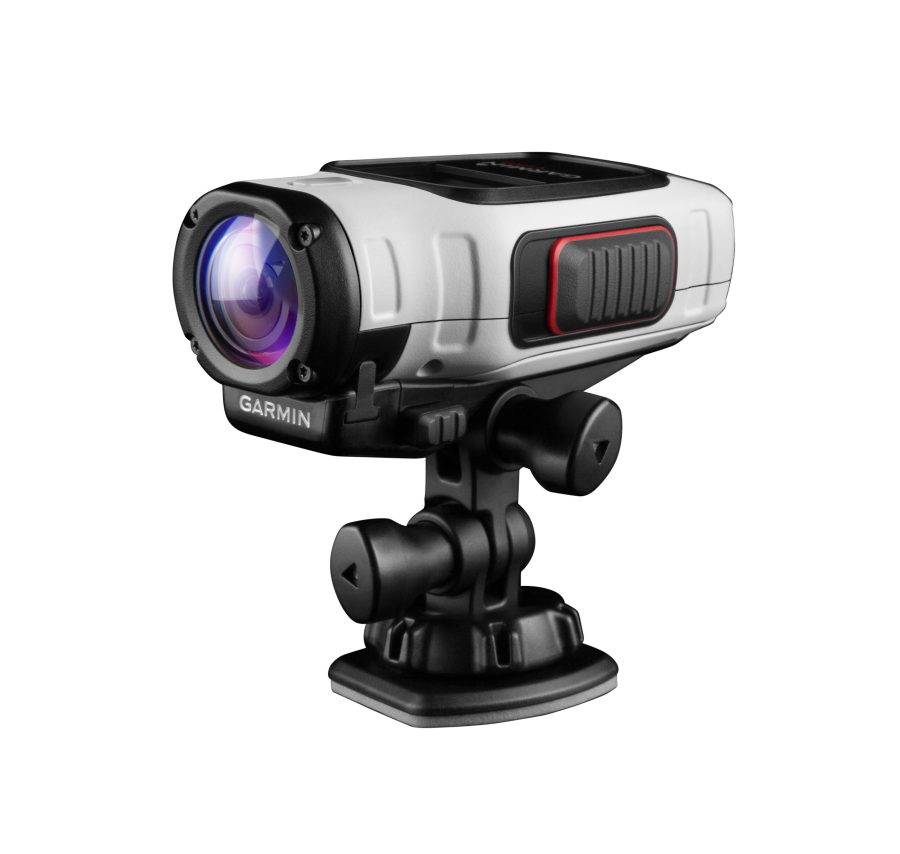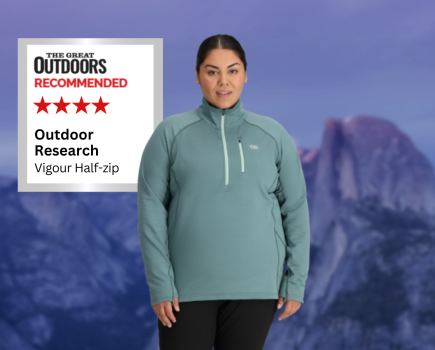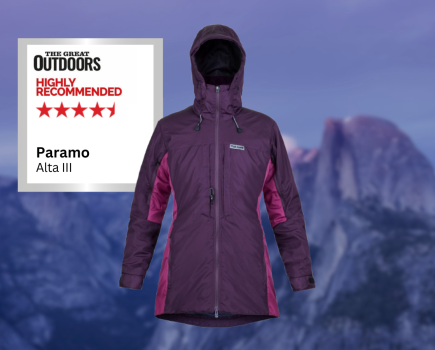The Virb is Garmin’s first foray into the action camera market and it’s an impressive launch. In a market that is dominated by GoPro, the Virb needed to really offer something over and above. And it mostly does.
NOTE: This is a first look review after a couple of weeks playing after reading the quick start manual. A full review will appear in three months time when I’ve fully had time to test it with other devices, and in different circumstances.
In a nutshell
There are two versions, the Virb and the Virb Elite, the latter has GPS, acceleromoter and altimeter and wifi connectivity. It is the Virb Elite we are testing.
In brief, at its highest setting it shoots in high definition 1080p. There’s a built in screen that allows you to review footage. It is also GPS enabled which means it can provide a map of your route and also chart your speed and altitude – which is quite a fun addition for cycling and high on the mountain. It’s also durably built and waterproof and, one of the biggest advantages, is a battery life that lasts up to three hours. Finally it can be connected via ANT+ to other Garmin devices and a smartphone, or directly to wi-fi. It’s an impressive list of basic features.
The device
The device weighs 176g and measures 110mm by 50cm. Straight out of the box it feels sturdy, and I have since dropped mountain biking without any problems! The interface is very easy to pick up with five buttons on the device. The main one that starts filming is a slider along the left-hand side and works brilliantly, even with gloves on. It can be pushed on even when the Virb is turned off – much better than the GoPro. The mode button turns the Virb on and flicks through the four main menus: Viewfinder, Playback, Dashboard and Settings.
Two arrow buttons can then toggle through the various options within the menus. For example, the Viewfinder can have the live, colour display screen, a horizon to level the device or an overview of time and memory space left. The Dashboard options can show a compass, distance travelled, speed, elevation and even G-force! It is also where you’ll see the heart-rate or cadence monitor if attached.
Settings is where you can choose, among many other options, the type of video you are shooting. This could be 1080p, slow motion or time lapse, and anywhere in between. In all – and on simply playing with it (as opposed to reading through manual), it’s very simple to navigate and flit between the most used modes, which in my case mountain biking, was time lapse (for the uphill bits!) and regular 1080p mode. It takes a Micro SD card.
Attaching the device
There are dozens of mounts and it comes with a mount that be stuck to a surface. I was also sent a mount for a vented helmet – perfect for mountain biking. If I was heading across the Cuillin Ridge, I’d need the Head Strap Mount for £17.99. But it is also compatibile with my GoPro mount. There’s also a small tube mount for the end of a walking or skipole. And it comes with a tripod mount.
The software
For me, the VIRB Edit is the only let down of the Virb. I’ve not yet managed to export successfully a video directly to YouTube, and have only managed once to export a video from it, to then upload it to YouTube (the first example here). It’s also crashed several times and once my Mac. In short, it’s buggy. The editing software is very simple, and doesn’t allow, for example, overlaying words (although it does music). The other videos I’ve just used my Mac’s iMovie software which is shame because when you export from the VIRB Edit it includes the GPS information – for example, the speed, altitude and GoogleMap. It’s been updated once in the two weeks I’ve had it, and it’s not fixed, but I’d imagine it could be soon.
The results
The software notwithstanding, this is a hugely impressive piece of kit and one that has renewed my keenness of videoing my adventures and learning more about the narrative of video (it’s the future apparently).
It’s very simple to use, and flick through the modes allowing a bit of creativity. The battery life is a very impressive – one of the best of all the action cameras – I’ve never got close to depleting it even after a couple of hours of fiddling and bike riding. This is a luxury, and overcomes the main problem I had with the GoPro (I have the Hero 2). And, and other big and, it has the replay screen – although you can buy one for the GoPro 3. This is more expensive however, at £350 for the Elite reviewed here, and £269 for the regular Virb.
I’ll go into more detail about the battery life, results and a comparison with the GoPro in the full review. But in the meantime, I’m very excited about it – expect a lot more video on tgomagazine.co.uk!
The videos
I’ll keep adding videos here – although the ones here seemto have lost some resolution uploading to YouTube.
This is a video with stabilization that has been uploaded directly to YouTube from the VIRB Edit software and therefore had the extra GPS information.
Here’s a video without stabilization turned on.
Here’s me putting up an MSR Hubba Hubba NX tent (with a little help)
And here’s one to suggest how sturdy the camera is:








